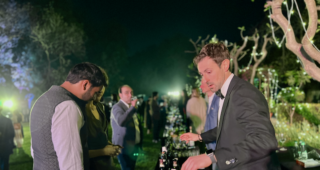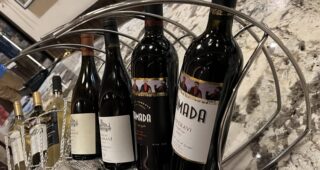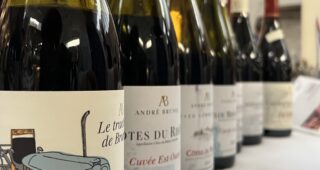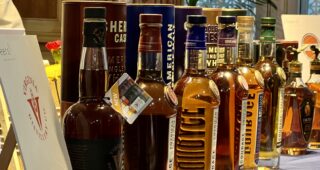
Fame has its flipsides too! First- a continuous effort required to stay on top and second- increasingly high number of competitors surreptitiously trying to encash on your brand. So what does one do to counter these threats? Simple! Be your original self and continuously innovate! This is precisely what the best known wine in the world does, and the regulatory body known as Comité Interprofessionnel du Vin de Champagne (CIVC) rather proactively ensures so!
CIVC was initially formed in 1935 by the name ‘Chalons Committee’ (Chalons is a small city that is the capital of Champagne-Ardenne district) with an aim to harmonise dealings between vine growers and the négociants (merchants) in the Champagne region. Over the years, the organisational structure of this committee saw changes and it evolved in the present form in 1941. The principal activities of CIVC relate to technical and commercial support to the Champagne producers as also to zealously defend the Champagne brand against wrongful, illegal or unauthorised use in many countries. It goes without saying that thus far it has done an enviable job of it !
Coming to my visit to Champagne, it was courtesy CIVC that I landed as a guest in the region, thanks to my enthusiasm (and most certainly performance too) in the Intermediate level certification of the Wine and Spirit Education Trust (WSET), London. These scholarships are awarded by CIVC to offer select wine professionals across the world, a detailed look into the enchanting world of the famed bubbly!
So when we arrived at the lively yet business like street in Epernay, the Maison de la Champagne greeted us with its chic demeanour silently containing the bubbly vivacity as would a Champagne bottle- and the Ambassador of Champagne to India, Mr Rajiv Singhal (in the photo alongside) led our delegation from the front. We were escorted to a vast and naturally illuminated hall replete with tables that had all the requisites of wine tasting. But before the tasting expedition, it was the crisp and informative presentation by Monsieur Philippe Wibrotte, Responsable des Relations Publique at CIVC, that opened our eyes about how over the years, Champagne has withstood the vagaries of brand infringements, tough production years, and increasing market competition- all the while managing to stand tall and inimitable! The ubiquitous role of CIVC in the complete Champagne lifecycle- from Research and Development to Growing, Bottling, Shipping, Marketing, Retailing and Customer Contact, was also highlighted.

Following this was a guided wine tasting conducted by CIVC’s Oenologue Chargée de Communication, Madame Violaine de Caffarelli. The focus of the tasting was to highlight various aspects of terroir (soil type and micro climate), peculiarities of aperitif and gourmet wines, as also different winemaking philosophies of producers. The sequence of tasting was intelligently chosen so as to bring out the typicalities of grapes that go into the making of Champagne. The experience was poetically fluid and delightful as under :

Paul Goerg, Blanc de Blancs
Paul Goerg is a cooperative located in Vertus (one of the highest Premier Cru villages of Champagne) and is named after a Mayor of the town in late 19th century, who did yeoman service to the vineyards of the region. Situated in Cotes des Blancsregion famous for its Chardonnay grapes, 85 % of vineyards here are Premier Cru and the wines are produced in different styles owing to the diverse terroirs within the region.

Tasting Notes
A classic refreshing Chardonnay with wonderful complexity. The wine was limpid and pale gold in colour, with aromas of dried fruits and bread. The continuous bead of plentiful bubbles that formed an intense ring on top, made for a mesmerizing sight . The palate was creamy with complex flavours of prunes, figs, honey and nuts. I could not help but nod in affirmation when Madame Caffarelli pronounced it a good aperitif wine.
Mailly Grand Cru, Blanc de Noirs
What started as a collective bounceback effort by growers after the markets crash in 1929, went on to become one of the best known cooperatives located entirely in a Grand Cru region in the heart of Montagne de Reims. The Mailly estate is famed for its Pinot Noir dominant wines though Chardonnay is also cultivated in around 25% of its 70 hectares vineyards and used in some of its wines. We tasted this 100% Pinot Noir and the experience was nothing short of delightful!
Tasting Notes
An intense antique gold colour with a subtle rouge tint. Earthy and nutty nose with aromas of ripe berries, and some floral notes. On the palate, it was steely yet soothing,followed by a long finish. This wine was highlighted as a food wine and here too, we were in agreement owing to its lingering presence in the mouth.
Ruinart Brut, 50% each Pinot Noir and Chardonnay
The oldest Champagne house (established in 1729) that distributes its wines through very few outlets,is amongst the connoisseurs’ favourite the world over. The house is presently owned by the luxury goods conglomerate Louis Vuitton Moet Hennessey (LVMH). True to its ancient history, the Ruinart bottle is modelled on the original 18th century champagne bottle.
Tasting Notes
A brilliant straw yellow colour with gold reflections. A fruity and nutty nose complemented with yeasty aromas. The palate was full bodied with refreshing acidity, good structure and flavours of red apples and ripe peaches. An excellent gourmet wine but also good as aperitif.
A lunch fit for Kings


After the surreal tasting, we were escorted through the picture perfect streets of Epernay for a gourmet lunch hosted by CIVC at La Grillade Gourmande – a signature fine dining space owned by celebrity chef Christophe Bernard. Apart from the outstanding food, the wine list was humungous- content wise, as well as in its physical form. With real wine labels pasted on a thick cardboard album, it required well worked out arms to hold but then- no spectacles even if one is known to strain on a size 14 font! The Champagnes we selected were a Philipponat- a familiar Sparkler at Michelin starred restaurants & an exclusive Alfred Gratien– that falls into the Boutique genre. The chef personally approved our choice and his passion in describing the wine and food made his intimate involvement in the restaurant nothing but obvious. The pure indulgence made us miss out on scribbling down the tasting notes, but we compensated by clicking photos of the gourmet food- not to forget a parting snap with chef Christophe Bernard himself!
We couldn’t have had it better CIVC ! Merci! Au Revoir très bientôt!

P.S. Will upload more pictures on this post soon! So checkout the blog again after a couple of days!









